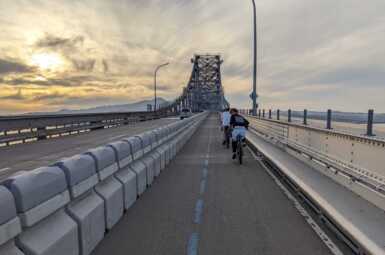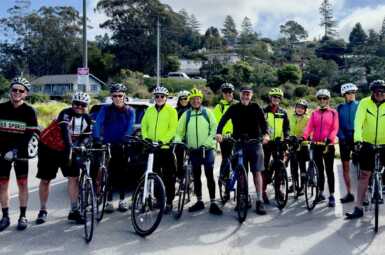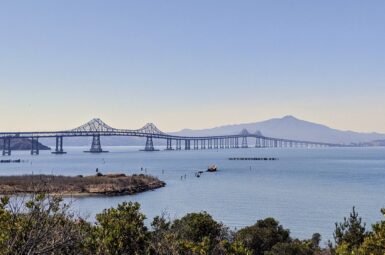November 2020 Election Sausalito City Council Candidate Questionnaires
As a 501(c)3 nonprofit organization, Marin County Bicycle Coalition cannot endorse candidates for public office, but we are able to share information so that you can arrive at your own conclusion. Below are Sausalito candidates’ responses to our questionnaire on bicycling in Marin. We have made no content changes. Thanks to the candidates for their time and thoughtful answers!
Here are the six candidates vying for three seats on the Sausalito City Council:
Joan Cox, Ian Sobieski, Melissa Blaustein, Janelle Kellman, Vicki Nichols, Aaron Singer
Do you ride a bicycle? If so, for what purposes and how often? (transportation/road/mtb)
Joan Cox:
-
Commuting/Errands: Never
-
Road: 0-1 days per week
-
Mountain: 0-1 days per week
Ian Sobieski:
-
Commuting/Errands: 4+ days per week
-
Road: 4+ days per week
-
Mountain: 4+ days per week
Melissa Blaustein:
-
Commuting/Errands: 0-1 days per week
-
Road: 0-1 days per week
-
Mountain: Never
Janelle Kellman:
-
Commuting/Errands: Never
-
Road: 2-3 days per week
-
Mountain: Never
Aaron Singer:
-
Commuting/Errands: Never
-
Road: 2-3 days per week
-
Mountain: 0-1 days per week
Vicki Nichols: No response.
Where does improving bicycling infrastructure and safety rank among your other policy priorities (HIGH / MODERATE / LOW / OTHER)
Joan Cox: High
Ian Sobieski: High
Melissa Blaustein: High
Janelle Kellman: High
Aaron Singer: High
Vicki Nichols: No response.
What’s your vision for the future of transportation in Sausalito? What are some of the city’s challenges, and how would you go about fixing them?
Joan Cox:
I see the use of cars decreasing, especially with COVID-19; I see the use of alternative transportation uses, such as bikes, e-bikes, scooters, and public transportation increasing. I see more schoolchildren riding bicycles to school. Sausalito like many cities has deferred maintenance on some of its streets and sidewalks. Fortunately, with SB 1 funding, the City Council has approved a robust street and sidewalk repair/resurfacing project for the coming years. Sausalito struggled with downtown bicycle congestion for several years, but with the Sausalito Bicycle Management team and the cooperation of the Golden Gate Bridge District, has hugely improved that issue. See below for discussion of Alexander Avenue corridor.
Ian Sobieski:
Full disclosure: I own 7 bicycles. We need to invest in safe bike lanes and separate bike paths. We can make Sausalito a bike riders gem while reducing impact of cyclists on pedestrians and drivers. We all know that transportation will be changing with ride sharing and changes in housing density. Still, cars will be with us for awhile. We are blessed with ALOT of room between the main street (Bridgeway) and the water. I support the creation of a separate bike path that separates riders from pedestrians and traffic. Where that is not possible, I support an integrated thoughtful design that balances the need for safe cycling and walking with driving. Its worth nothing that Onewheel and scooters are harbingers of future personal transportation. We will need to design our built-environment future toward the possibility of their increasing use.
Melissa Blaustein:
As a member of the Sausalito Sustainability Commission, I am acutely aware of the sizable impact that internal combustion vehicles have on our carbon emissions and the need to move away from them in order to create a better future for ourselves and future generations. Our highest GHG emissions continue to come from transportation, shockingly these numbers don’t even include our ferry service. I envision a sausalito with fewer cars on the road, and more bike lanes and pedestrian access, to encourage walking and public transit. We are still the only community in Marin to have no public EV charging sites. I am actively working with the sustainability commission, the city, and the Transportation Authority of Marin to secure funding for these EV charging sites. We have identified at least five locations, which could also serve as charging hubs for electric bikes as well as host a bike rack. The idea is a green, easy, transportation center near a public transit stop that is accessible for all. We also need to support projects like the Nevada Street Bike Lane and the suggestions for improving Bridgeway that our Ped Bike committee has brought forward. I am proud to be endorsed by four members of our pedestrian bike advisory committee, because I have demonstrated to those members how critical I feel this issue is to the future of our community.
Janelle Kellman:
As a former competitive cyclist and avid recreational cyclist, I think bicycles bring a sense of freedom and mobility unparalleled by any other form of transportation. I believe we will gravitate away from being a society dominated by cars, and will seek alternative forms of sustainable transportation such as bicycles. As a member of our General Plan Advisory Committee I advocated for free bicycle parking throughout Sausalito as a way to encourage this unique and wonderful mode of transportation. SB 1 funding provides Sausalito with the opportunity to pursue a comprehensive street and sidewalk repair/resurfacing project; I believe the creation of new, and widening of existing, bike lanes should be a key aspect of this project. I also support projects that aim to provide safe routes to schools for our children.
Aaron Singer:
One of the challenges facing the future of Sausalito transportation is the condition of much of our road infrastructure. In order for our town to prepare for a future of autonomous vehicles and more bicycles (both traditional and electric), we will need to focus energy and budget on repairing, upgrading and improving our surface infrastructure to accommodate the changes in transportation systems coming just around the corner. I will work directly with the Bicycle and Pedestrian Committee and the Public Works Dept. to create a long-term strategy to contemplate and consider these future requirements and put a strategic plan in place to address them. Any Transportation Strategic Plan will also need to preference from the very beginning, bicycle circulation safety and safe routes for both school children and commuters moving through our town.
Vicki Nichols: No response.
Covid-19 has dramatically impacted transportation, with fewer cars on the road, but also fewer people riding transit. How will you work to ensure that recovery efforts include sustainable and equitable transportation outcomes, especially for those most reliant on transit?
Joan Cox:
Although as local officials, we do not have jurisdiction over County and Golden Gate Bridge District transit, we nevertheless have worked and will continue to work to ensure our voice is heard and our residents protected. For example, the City Council appoints a liaison to the Marin Transit Authority to ensure our voice is heard concerning regional transit decisions. Further, as a City Councilmember, we opposed the proposal by Golden Gate Transit to reduce bus service through Sausalito with the outcome that the route in question was preserved. Similarly, by facilitating a safe and contiguous bicycle path from one side of Sausalito to the other, we can continue to encourage the use of bicycles in lieu of cars for commuting. And our Safe Routes to Schools program will facilitate the use of bicycles by schoolchildren.
Ian Sobieski:
Ride sharing is the future. I will do all I can to promote it. In how they interact with transportation, our seniors already have an early form of the future in CARSS, the volunteer driver service for seniors. Our built environment should be imaginative and creative in integrating all future means of transportation; for example Onewheel and e-scooters are harbingers of future personal transportation. We will need to design future toward the possibility of their increasing use where “roadways” no longer need to be a car width wide. This is a “back to the future” situation as any local knows: Sausalito has many public rights ways that are just a few feet across, vestiges of the “pre-car” era. How beautiful will it be to have channels for riding and scooting that are not near, or on the side of, car driven roads?
Melissa Blaustein:
Through my work on social and economic justice I am also very present to the reality that transit and bikes serve as a key form of transit for marginalized communities, including many who work in the businesses of our community. It is imperative that any recovery ensures not only the continued availability of these options but ideally programs to make them more attractive to a wider portion of the population. However, given the nature of COVID-19, the sad reality is that ridership is likely to remain down for quite some time as people shy away from crowded spaces such as the inside of a full commuter bus or ferry. That’s why bike lanes are so important. I was so inspired by the Mayor of Paris taking quick action to establish temporary bike lanes across the city to address this problem. We can do the same thing here. It’s not just about convenience, it’s about equity.
Janelle Kellman:
The answer begins with exploring opportunities for a continuous bicycle path from one end of Sausalito to the other, that provides a safe corridor for bicycles of all types. As the Chair of the Planning Commission, I have advocated for planning policies that are focused on providing equitable transportation opportunities. This means clean, wide, and well-lit bike paths that serve adults and children alike. Further, my 10 years on the planning commission have provided me with unique insight into green and low impact infrastructure innovations, and opportunities to design for more sustainable circulation and transportation patterns that maximize communal outdoors spaces, and ease of access via bicycle.
Aaron Singer:
Every calamity (like COVID-19) is opportunity hidden under a dark cloak. We can anticipate that there will be permanent changes to how people work even after the pandemic has come to an end. This will likely mean more people working from home for more of the work week and less people commuting long distances to offices. The opportunity is before us to encourage people to shop, eat and recreate nearby – utilizing local public transit or beginning to ride bikes as an alternative to their personal vehicles. For those who are still commuting to a job or office, with less cars on the road public transit will become an even more attractive option as there will be less crowds and less traffic, making public transit a more comfortable and attractive alternative to a car.
Vicki Nichols: No response.
If elected, what would you do to 1) improve safety for all people who ride bikes and 2) increase the number of people who bike for transportation? Please note any infrastructure projects in Sausalito that you think are particularly important.
Joan Cox:
The Alexander Avenue corridor is treacherous even for experienced bikers. I have been working with Golden Gate Transit and the County of Marin for several years to identify funding to improve the Vista Point Trail so that bicyclists can use that trail to access the Golden Gate National Recreation Area and board a shuttle to access the downtown area before riding a ferry back to the City, thereby avoiding Alexander Avenue altogether. In addition, both as a Planning Commissioner and as a City Councilmember, I have advocated for a single safe, contiguous bicycle path from one side of Sausalito to the other. And the City of Sausalito has invested grant monies to enforce its Share the Road program to ensure bicycle safety in the midst of impatient motorists.
Ian Sobieski:
As per above: separate bike path, more bike lanes, cut red tape in “experimenting” with changes to see what works and then iterating on an implementation to “get it right”; rather then spending a lot of time and money trying to plan everything perfectly ahead of time. Doing these things WILL increase ridership. Bear in mind, our hills are a disincentive for some bikes, e-bikes changes that.
Melissa Blaustein:
It is imperative that we improve the safety and bikeability of Sausalito’s streets and most importantly Bridgeway. We must also balance the varying needs of locals, regional bikers, and tourists who all have differing levels of experience with biking as well as understanding of the nuances of navigating Sausalito.
1) First, how can we ensure that tourists, many of whom are using rented bikes and may be unfamiliar with standard safety practices, do not make the roads unsafe for others? The easiest way will be to take advantage of the new ferry service between Ft. Baker & Alcatraz to open up an opportunity to divert a large portion of the traffic away from the most congested parts of downtown given that many simply bike across and head straight to the Ferry for the trip back to San Francisco. This is also an opportunity to work with the GGNRA to develop a safer bike path for daily commuter by developing a bike path that weaves along the waterfront to Ft. Baker, skipping the often treacherous bike route up Alexander, especially at the transition from South st, and connecting to switch backs up to the bridge or perhaps something modeled after the Trampe bicycle lift in Trondheim, Norway to assist cyclists up the hill.
Second, we can make Bridgeway more bike friendly by eliminating the central lane and creating separated bike lanes that improve safety for cyclists, drivers, and pedestrians alike as it would more clearly delineate their paths of travel while ensuring a buffer between them.
Third, there is an opportunity to create a dedicated off-street bike path through the Marinship to minimize bike traffic on Bridgeway through the northern half of the City. There is also an opportunity to improve the safety of the entrance to the Sausalito-Mill Valley Bike Path at Gate
Fourth, we must support the plan for a bike path en route to Willow Creek Academy on Nevada Street to encourage safe routes to school for our kids.
2) The above efforts would go a long way towards increasing the use of cycling as a primary mode of transit for many by improving safety, and therefore increasing comfort, along some of the most dangerous areas for cyclists in Sausalito.
Currently Sausalito does not receive revenue from the bike rental companies that take advantage of our beauty as the primary driver of their business model. I propose requiring their bikes to be chipped so that we know when they cross into our community and so we can apply a surcharge that could then create funding to help with the above infrastructure as well as programs to further incentivize the uptake of cycling as a regular part of life for more Sausalitans.
The system to be set up to track incoming bikes from the rental companies could also be used for our local cyclists. This not only would make it easier to find the bikes that might be stolen but also create a way to track their use for commuting to properly reward their use through programs such as offsetting fees for parking permits, providing gift certificates to local businesses (something that would have the added benefit of supporting our local economy), and even create friendly competitions among neighbors and neighborhoods, like the innovative bike to school program created by Aaron Roller to encourage kids to ride their bikes. Let’s use technology to improve bike ridership!
Janelle Kellman:
I rode my bicycle to work in SF for over 10 years. There were some locations in Sausalito, such as Bridgeway in the south part of town, that became very congested and dangerous during rush hour. We need to develop a better plan for handling the interplay of traffic, pedestrians, and bicycles throughout our community. We have 3 clear opportunities to improve safety that I also think will increase the number of people using bicycles as transportation. Those include (1) bicycle safety coming down Alexander (2) safe routes to schools, with a focus on dedicated bike lanes near schools and (3) clearly delineated bike lanes for commuters.
Aaron Singer:
Safe bike routes for school children and commuters should absolutely be a priority for any future Transportation Strategic Plan. Projects like the Safe Routes 2 School Nevada St. Bike Lane initiative and the Gate 6 Signal project are perfect examples of the types of transportation projects that should be getting green lit by municipal government.
Vicki Nichols: No response.
Why should people who ride bikes vote for you?
Joan Cox:
As a biker / “scooterer” myself, I am aware of challenges in bicycling through Sausalito and am committed to ensuring bicycle safety, creation of a safe and easily traversible bicycle path from one side of Sausalito to the other, as well as enforcing share the road regulations to ensure bicycle safety. I am also a huge supporter of our safe routes to schools program aimed at protecting the hundreds of children who attend school in Sausalito.
Ian Sobieski:
Because all my answers above make me a “dream candidate” for bikers. But I am collaborative, creative, and strategic in working toward goals, so I will make positive difference and fast progress.
Melissa Blaustein:
Because I have dedicated my life to leveraging creativity and collective genius to solve problems, including ones such as the balancing of needs required to ensure a Sausalito that is inclusive for cyclists and non-cyclists alike. Further I recognize the vital role that bicycles play in our community’s health – environmentally, socially, & economically. I will fight to ensure that we encourage more in our community bike by finding ways to improve the safety of the paths available, encouraging new opportunities to incentivize the use of bikes, and by limiting the problems caused by tourists and others who give cycling a bad name through unsafe behavior. I have completed a half iron man race and felt safer doing that in many instances, than I have biking down some of the “dedicated bike lanes” on Bridgeway. We have to do better. I want Sausalito to be a bike friendly community by reducing the points of contact between bikes, cars, and pedestrians to ensure an inclusive experience for all.
Janelle Kellman:
It’s not enough that Sausalito encourages new infrastructure projects to improve bike safety; Sausalito should be known as a bike friendly community. As a former bike racer, comfortable in a peloton or riding solo, I am extremely sensitive to the interplay between traffic and bicycles. I can speak from first hand experience, having spent 1000s of hours on the road, on how to improve roads, and circulation. I can bring that hands-on knowledge to engage in a collaborative community process. I am also the Chair of the Planning Commission and an environmental lawyer. Bicycles present a wonderful option for emission-free transportation, and can be the focal point for exploring new, sustainable traffic patterns.
Aaron Singer:
I have been a cyclist since I was a child when I first started BMX racing in Oklahoma. My first job was at a Schwinn bike shop as a bike mechanic when I was 13 years old. I raced bicycles (road, cycle-cross and track) in college in Colorado in the late 80s, then went on to do triathlon seriously for 12 years as an adult. My last tri was Catalina Island in 2018. Bikes are in my blood and I believe bikes are a critical element of any town’s transportation planning. I will be an enthusiastic and passionate advocate for bicycle transportation issues in Sausalito.
Vicki Nichols: No response.
members make it happen!
We’re fighting for a more bike-friendly future in Marin. Are you with us? Join Marin County Bicycle Coalition today.



